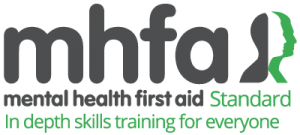Living as we do, in this era of prolonged personal, pandemic, and global stress, has become very challenging. Many of us live with high levels of daily stress, which can feel overwhelming. But, we don’t have to live that way…….
Picture a lion hunting a gazelle, mercilessly running her down. The gazelle is terrified and in fight-or-flight mode, sprinting for her life. The lion is exhilarated, anticipating her meal as she closes the gap. Which animal is experiencing stress — the lion or the gazelle? The answer is: both. Both nervous systems are highly activated and undergoing physiological changes they can’t control. Yet they’re experiencing stress in two very different ways. The gazelle is locked in a threat response. She is full of fear. Her blood flow is constricted because her vessels have narrowed to prevent excessive bleeding. Less oxygen makes it to the brain as physiological resources are directed to the limbs. Her body has become a machine with only one purpose: to outrun the predator. Meanwhile, the lion is having a challenge response. Her heart is pumping volumes of blood efficiently, allowing her maximal speed and anticipating the meal she’s about to have. She is focused and driven. She seems to have unlimited reserves of energy. These are two very different physiological profiles, but stress is the constant. The difference between the lion and the gazelle? The gazelle perceived a threat: her life was in danger. The lion perceived a challenge: her next meal.
There is a lesson here for us humans. Most of us are not regularly being chased by life-threatening lions, but our bodies are behaving as though we are. Too often, we’re responding to the stressors that pop up over the course of a day as though they’re a survival threat to fight off or run from. Our bodies shoot into fight-or-flight mode, dumping cortisol and adrenaline into our bloodstreams, rocketing our nervous systems into a state of fear and vigilance. And when that response happens, full blown or even half blown, with each stressful or unexpected event that comes along, our bodies no longer know how to “come down” from the stress automatically.
Why do some of us stew in the soup of stress daily, overreacting to small things, while others let big, threatening events bounce off them as if they had a shield around them? Well, our brains are constantly processing sensory input from our body and environment and comparing that input with our memories of the past in order to best predict the future. The human brain is a predictive machine using our personal past as data. Because we have more of a “predicting brain” than a “reality brain” we may be responding to something we predict or believe will happen, rather than what is happening. Unmanaged chronic stress wears down telomeres — the “caps” at the ends of our chromosomes that turn out to be important biological markers of health and aging — and hastens cell deterioration. This can usher us too early into the “disease-span” (the period in our lives when we start to develop the illnesses of aging).
Chronic stress also shifts our behaviour and appetite. It drives us toward comfort foods (those with high sugar and fat). Believing it needs to conserve resources for survival, the body slows metabolism and stores fat in the inner abdominal area. High stress arousal keeps us from sleeping well, so we’re constantly depleted. It drives addiction. “Stress brain” turns on brain pathways that crave pleasure and relief, making calorie-dense foods more rewarding and driving insulin resistance, inflammation, and obesity.
Yet, at the same time, our acute stress response — the short-term response we turn on when under pressure — is an amazing capacity we have. Our bodies are built to handle that type of transient stress. When something negative or challenging happens, or when we anticipate that it will, we mount this beautiful, sharp, peak response. In the blink of an eye, blood pressure goes up, the nervous system becomes more vigilant, and stress hormones are released into the bloodstream. The sympathetic nervous system (our accelerator – getting us ready for action) revs up, allowing us to have this intense, energizing stress response. This fast, powerful biological domino effect helps us focus on danger, have more energy, and react quickly.
Our acute stress response is a huge asset, and we would never want to be without it. But we need that stress response to end when the stress-inducing incident does: we need to take our foot off our accelerator and apply our break (the parasympathetic nervous system). The good news is that it is possible to do this. When we can expect the unexpected and remain mentally open and flexible to a range of possibilities, it takes the teeth out of unanticipated issues that crop up — we don’t have that knee-jerk “gazelle” response. And when we have a clear idea of what we can and can’t control, we’re less likely to spend our time planning for the unplannable. Both these strategies can help us shift toward a healthier, more balanced stress experience. But there’s a critical next step: being able to see daily stressful events as challenges, not threats. One way to do this is to change how we think about our stress response. The more we feel in control and equipped with resources, the more we have a positive stress response. Challenge responses are characterized by feeling more positive emotion and by more blood pumping from the heart (cardiac output), instead of the vasoconstriction (narrowing of the blood vessels) that we experience with a threat response. Feeling more challenge than threat before a stressor is even related to longer telomeres, which as we know are linked to longevity and vitality.
Many of us feel threatened by the stress response itself but science shows that with some practice, we can manipulate our own stress response. Learning to view our stress response as a strength leads to a challenge mindset and physiology, and better coping. Our stress response is helping us, and research shows that focussing on the benefits of stress, rather than the harmful effects, helps hugely: when we focus on the benefits of stress, we feel less stress about stress, pay attention to positive cues rather than threatening cues and approach situations more confidently rather than avoid them. With positive stress beliefs, we feel more engaged in our work, more positive emotions and less physiological reactivity. What we tell ourselves matters.
So, when you feel your stress response starting up — a surge of alarm, racing heart, damp palms, high energy or jitteriness — remember that the capacity to mount a stress response to a difficult situation is a strength, not a weakness. Asking for support when you are struggling is a strength, this is your body asking for the help it needs in that stressful moment so it can be stronger. Your body is built to recover from stress quickly. The human nervous system can go back to baseline within minutes. You have this capacity already — you just need to get out of your own way and let your body do what it’s programmed to do. And it’s a lot easier for our bodies to “come down” in a timely and healthy way after a challenge experience instead of a threat experience. The biological and mental residue of a threat experience sticks around as we ruminate and relive. Challenges are different. Like scaling a mountain, we hit the peak and then come down the other side.




